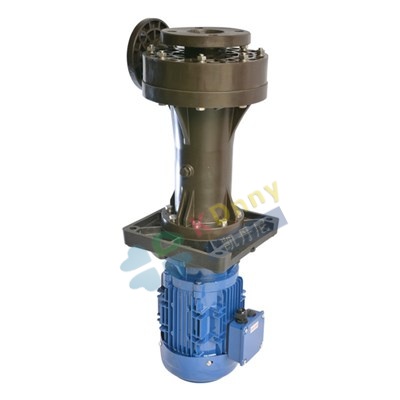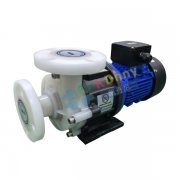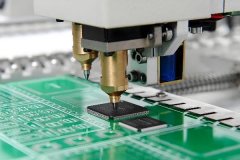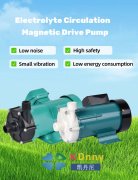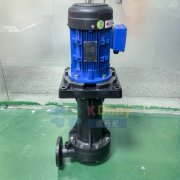Acid and alkali resistant pumps are chemical pumps that are widely used in the industry. Due to different user needs, the flow rate and head are also different. When users select pumps, the flow rate is an important selection basis. Different flow rates and pump types are also different. If the flow rate needs to be adjusted for a pump type with a certain caliber, today I will show you how to adjust the flow rate of acid and alkali resistant pumps.
1. Cutting impeller
When the speed is constant, the pressure head and flow rate of the pump are related to the impeller diameter. For the same model of pump, the cutting method can be used to change the characteristic curve of the pump. The cutting law is based on a large amount of perceptual test data. It believes that if the cutting amount of the impeller is controlled within a certain limit (this cutting limit is related to the specific speed of the water pump), the corresponding efficiency of the water pump before and after cutting can be regarded as unchanged. Cutting the impeller is a simple and easy way to change the performance of the water pump, that is, the so-called variable diameter adjustment. It solves the contradiction between the limited types and specifications of water pumps and the diversity of water supply object requirements to a certain extent, and expands the scope of use of water pumps. Of course, cutting the impeller is an irreversible process, and the user must make precise calculations and measure the economic rationality before implementing it.
2. Valve throttling
The simplest way to change the flow of a centrifugal pump is to adjust the opening of the pump outlet valve, while the pump speed remains unchanged (generally the rated speed). The essence is to change the position of the pipeline characteristic curve to change the pump's operating point. When the valve is closed, the local resistance of the pipeline increases, the pump's operating point moves to the left, and the corresponding flow decreases. When the valve is fully closed, it is equivalent to infinite resistance and zero flow. At this time, the pipeline characteristic curve coincides with the ordinate. When the valve is closed to control the flow, the water supply capacity of the pump itself remains unchanged, the head characteristics remain unchanged, and the pipe resistance characteristics will change with the change of the valve opening. This method is easy to operate, the flow is continuous, and it can be adjusted between a certain large flow and zero at will, without additional investment, and is widely applicable. However, throttling regulation consumes the excess energy of the centrifugal pump to maintain a certain supply volume, and the efficiency of the centrifugal pump will also decrease accordingly, which is not very reasonable economically.

3. Series and parallel connection of water pumps
The series connection of acid-base resistant centrifugal pumps refers to the delivery of fluid from the outlet of one pump to the inlet of another pump. Taking two centrifugal pumps of the same model and performance in series as an example, the series performance curve is equivalent to the superposition of the head of the single pump performance curve under the same flow rate. The flow rate and head of the series working point A are larger than those of the single pump working point B, but they are less than 2 times that of the single pump. This is because after the pumps are connected in series, on the one hand, the increase in head is greater than the increase in pipeline resistance, resulting in the increase in excess head, and on the other hand, the increase in flow increases resistance, which inhibits the increase in total head. When the water pumps are running in series, it is necessary to pay attention to whether the latter pump can withstand the pressure increase. Before starting, the outlet valve of each pump must be closed, and then the pumps and valves are opened in sequence to supply water to the outside.
4. Variable frequency speed regulation
The deviation of the operating point from the high-efficiency zone is the basic condition for the water pump to be regulated. When the speed of the water pump changes, the valve opening remains unchanged (usually a large opening), the characteristics of the pipeline system remain unchanged, and the water supply capacity and lift characteristics change accordingly. When the required flow rate is less than the rated flow rate, the lift during frequency conversion speed regulation is smaller than valve throttling, so the water supply power required by frequency conversion speed regulation is also smaller than valve throttling. Obviously, compared with valve throttling, the energy-saving effect of frequency conversion speed regulation is very prominent, and the working efficiency of the centrifugal pump is high. In addition, the use of frequency conversion speed regulation is not only conducive to reducing the possibility of cavitation in the centrifugal pump, but also can extend the start-up/shutdown process by presetting the speed increase/deceleration time, greatly reducing the dynamic torque, thereby largely eliminating the extremely destructive water hammer effect and greatly extending the life of the water pump and pipeline system.
-THE END-
